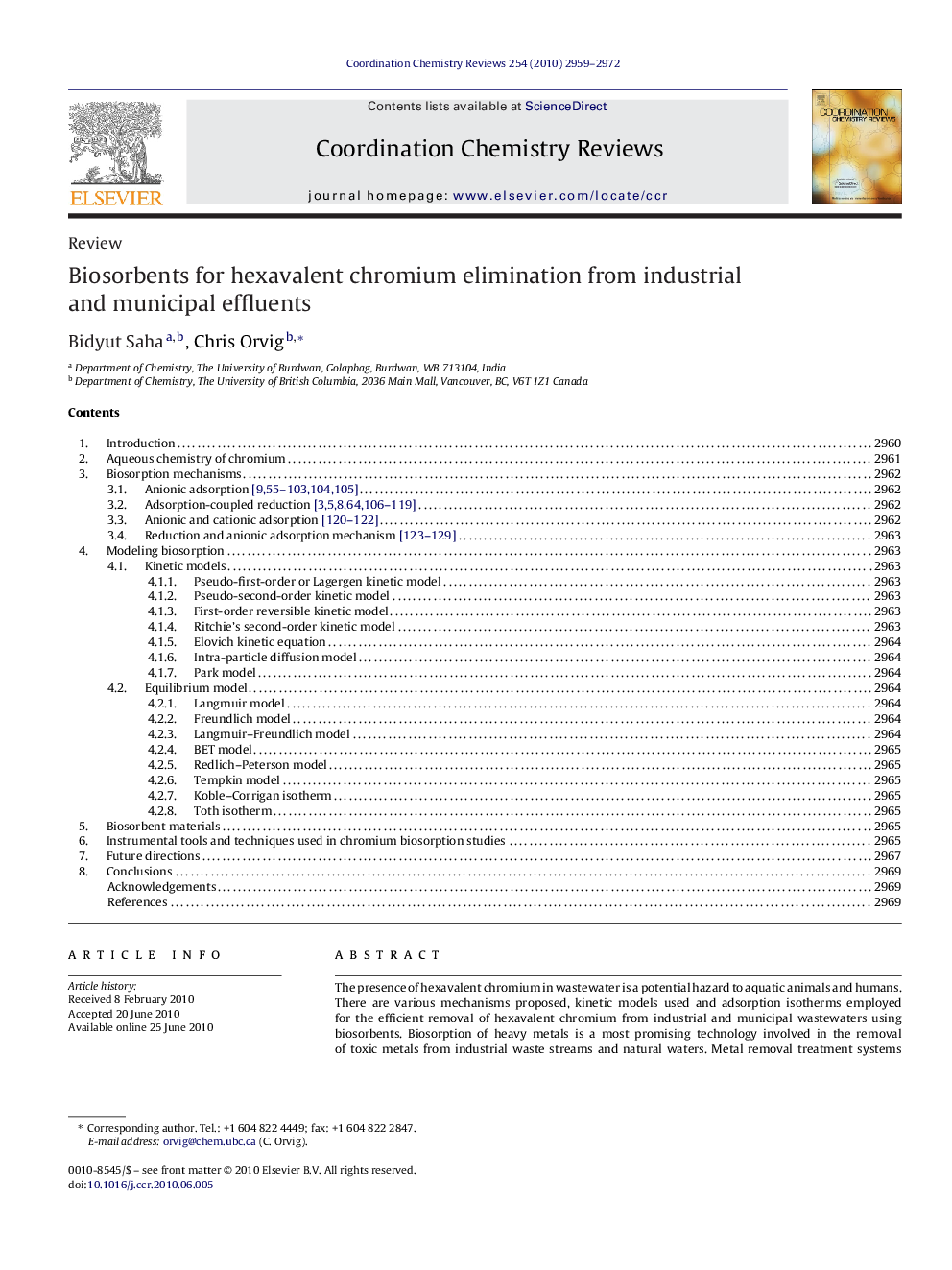| Article ID | Journal | Published Year | Pages | File Type |
|---|---|---|---|---|
| 1300618 | Coordination Chemistry Reviews | 2010 | 14 Pages |
The presence of hexavalent chromium in wastewater is a potential hazard to aquatic animals and humans. There are various mechanisms proposed, kinetic models used and adsorption isotherms employed for the efficient removal of hexavalent chromium from industrial and municipal wastewaters using biosorbents. Biosorption of heavy metals is a most promising technology involved in the removal of toxic metals from industrial waste streams and natural waters. Metal removal treatment systems using microorganisms are cheap because of the low cost of sorbent materials used and may represent a practical replacement to conventional processes. The present review discusses hexavalent chromium biosorption properties of algae, bacteria, fungi, and agricultural products, as well as adsorption properties of non-living substances. Cell walls are responsible for biosorption of dead biomaterial; compositions of cell walls are discussed. Chemical modification of biosorbents, optimization of biosorption parameters, mixtures of different biosorbents and the study of biosorption mechanisms are the main keys to transfer the biosorption process from lab to industry.
